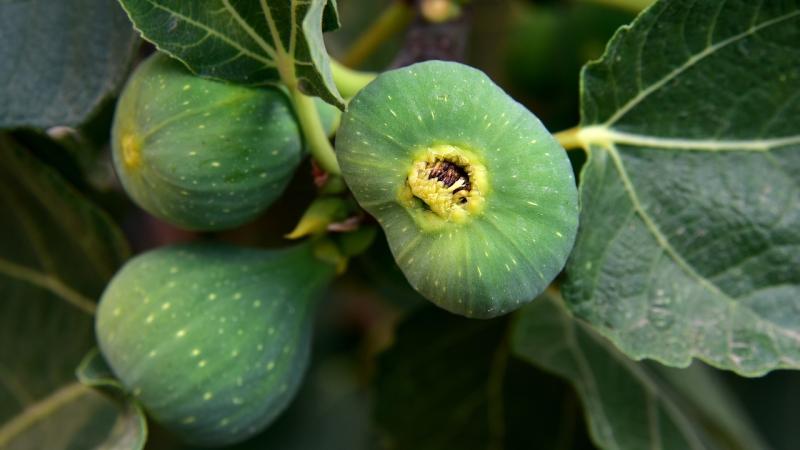
Researchers study how fig tree distribution influences fig wasps’ dispersal evolution
The relationship between a fig tree and a fig wasp is a match made in heaven. The female fig wasp lays its eggs in the fig flowers or syconia, and help disperse the pollen of the plant. In return, the fruit provides shelter and food for the larvae that hatch out of the eggs. However, not all wasps are found in every fig tree. “Every one of the 800 and more fig species in the world has a unique set of fig wasp species (a fig wasp community) that depend on the fig to survive,” says Prof Renee M. Borges from the Centre for Ecological Studies, Indian Institute of Science, Bengaluru, whose research focuses on studying the interactions between species.
In a recent study, Prof Borges and her team of researchers from IISc have investigated how the distribution of fig trees in a region corresponds to the wasp communities present there. This knowledge helps in understanding how wasps, in turn, evolutionarily adapt to their surroundings based on the criteria imposed by their host fig trees. The study, published in the journal Biology Letters, was funded by the Department of Science and Technology (DST), the Department of Biotechnology (DBT), and the Ministry of Environment, Forests and Climate Change, Government of India.
Fig trees are of two kinds -- monoecious figs whose syconia has both the seeds and pollen, and dioecious figs that have separate syconia with seeds and pollen growing on different individual trees. The researchers considered two fig species from South India for this study. The hairy fig or kada atthi in Kannada (Ficus hispida), which belonged to the first type and has four species of wasps associated with it, and the cluster fig (Ficus racemosa), or atthi in Kannada, belonging to the second type and having seven associated wasp species.
Wasps, either directly enter the syconia or use a long, needle-like organ, called the ovipositor, to lay their eggs. The syconia, which come in different sizes and shapes, control which species of wasps enter them. “Due to the chemical, morphological, and developmental restrictions of the syconia, only specific species of fig-wasps are associated with a single fig species,” remarks Prof Borges. The syconia either secrete specific volatile compounds to attract or repel the wasps or use mechanical barriers such as the syconium wall to restrict wasps from laying their eggs into the fig. Evolution then takes its course to influence the structural and behavioural traits of the wasps as they adapt to their host figs.
In this study, the researchers analysed the geographical distribution of 18 F. racemosa trees and 17 female and 30 male F. hispida trees in the Agumbe Nature Reserve of Karnataka. They used GPS coordinates to track their positions and assessed the ability of the wasps to fly from one fig tree to another by measuring their physiological traits, such as their flight durations, body fat content and metabolic rates. These traits are informative about how wasps undertake their long journeys, from one specific fig tree to another.
The researchers tethered individual wasps collected for the study under a microscope as they are very tiny, measuring less than two millimetres. “Once they were tethered, we monitored their flight durations by using tiny motion detectors in the lab. We also separated fat from the body to measure the amount of fuel needed for the tethered flight. Finally, we estimated the metabolic rates of the wasps by monitoring their carbon dioxide output”, explains Prof Borges. These measurements are highly useful as they reflect the flight activity levels of wasps and the relative capacity of wasps to perform long-distance flights.
When the researchers compared the spatial distribution of the host fig trees and the traits of wasps that live in their syconia, they found that F. racemosa had a wider distribution than the male and female plants of F. hispida. The results also showed that the wasp communities residing in F. racemosa exhibited greater dispersal ability than those in F. hispida. This observation establishes the connection between the resource distribution of fig trees and the dispersal traits of fig wasps. Over evolutionary time, as the host figs speciated and changed their dispersion patterns, their associated wasp communities closely tuned their dispersal to match the dispersion of their host trees.
The findings of the study throw light on the role of evolution, as more spatially distributed fig trees select and harbour wasps that can fly long distances. Conversely, those with decreased spatial dispersion do not favour the selection of wasps with traits that enable them to fly long distances. This phenomenon is likely applicable to many insects, such as pests on crops that move from one plant to another.
“We propose that adaptation over evolutionary time requires clear and detailed consideration when comparing traits that are related to dispersal in a community”, say the researchers, adding that they plan to now verify their findings in other figs and fig wasp communities.
This article has been run past the researchers, whose work is covered, to ensure accuracy.





